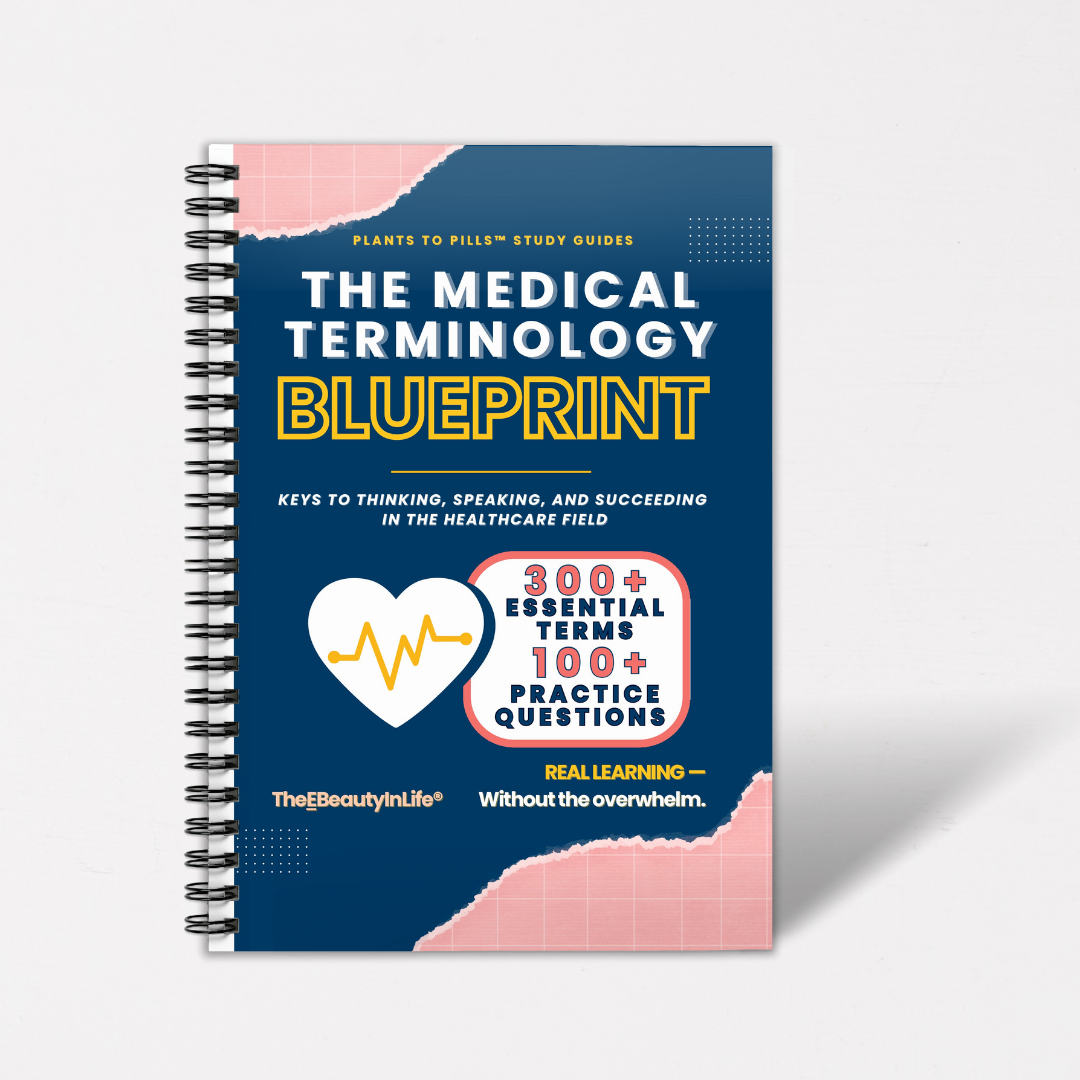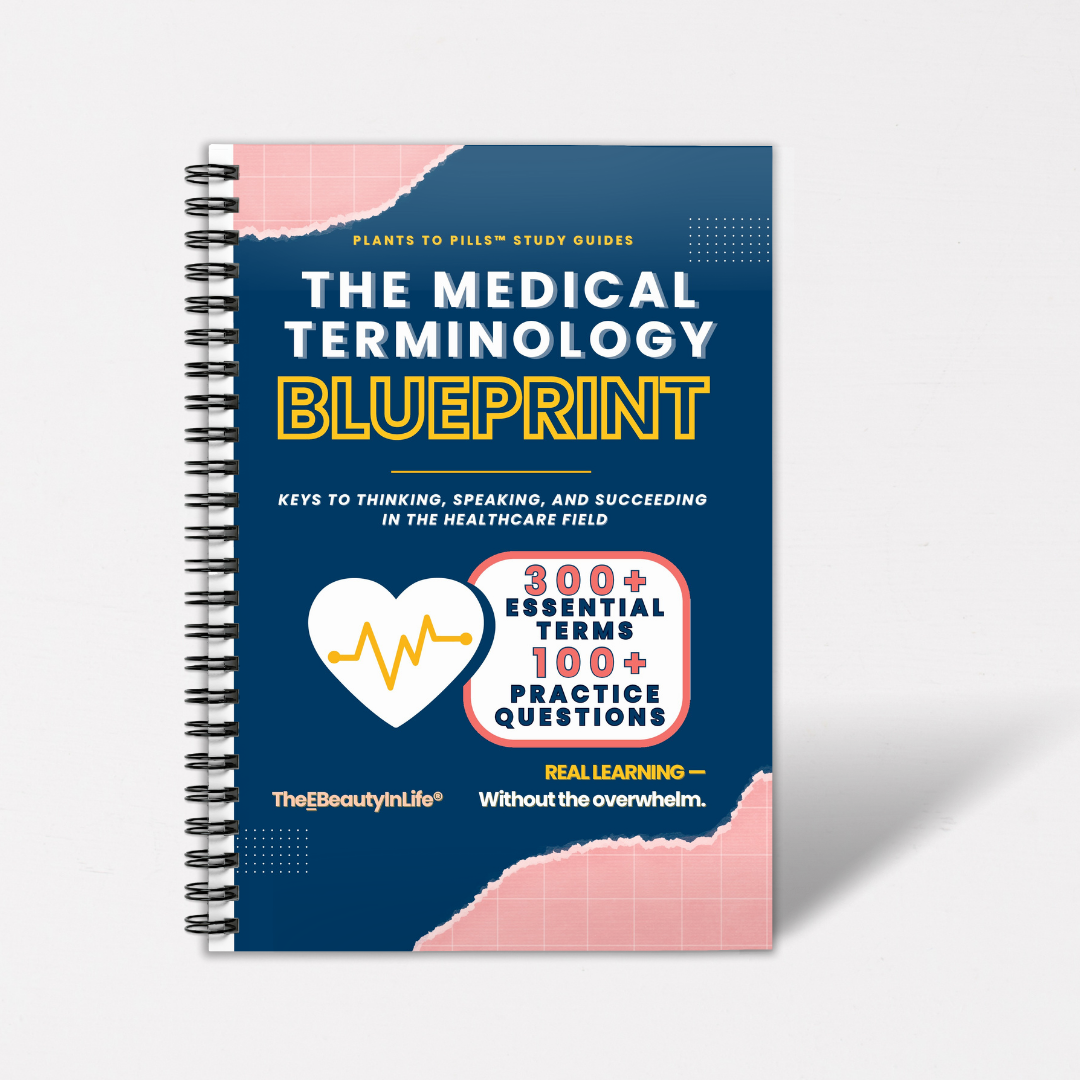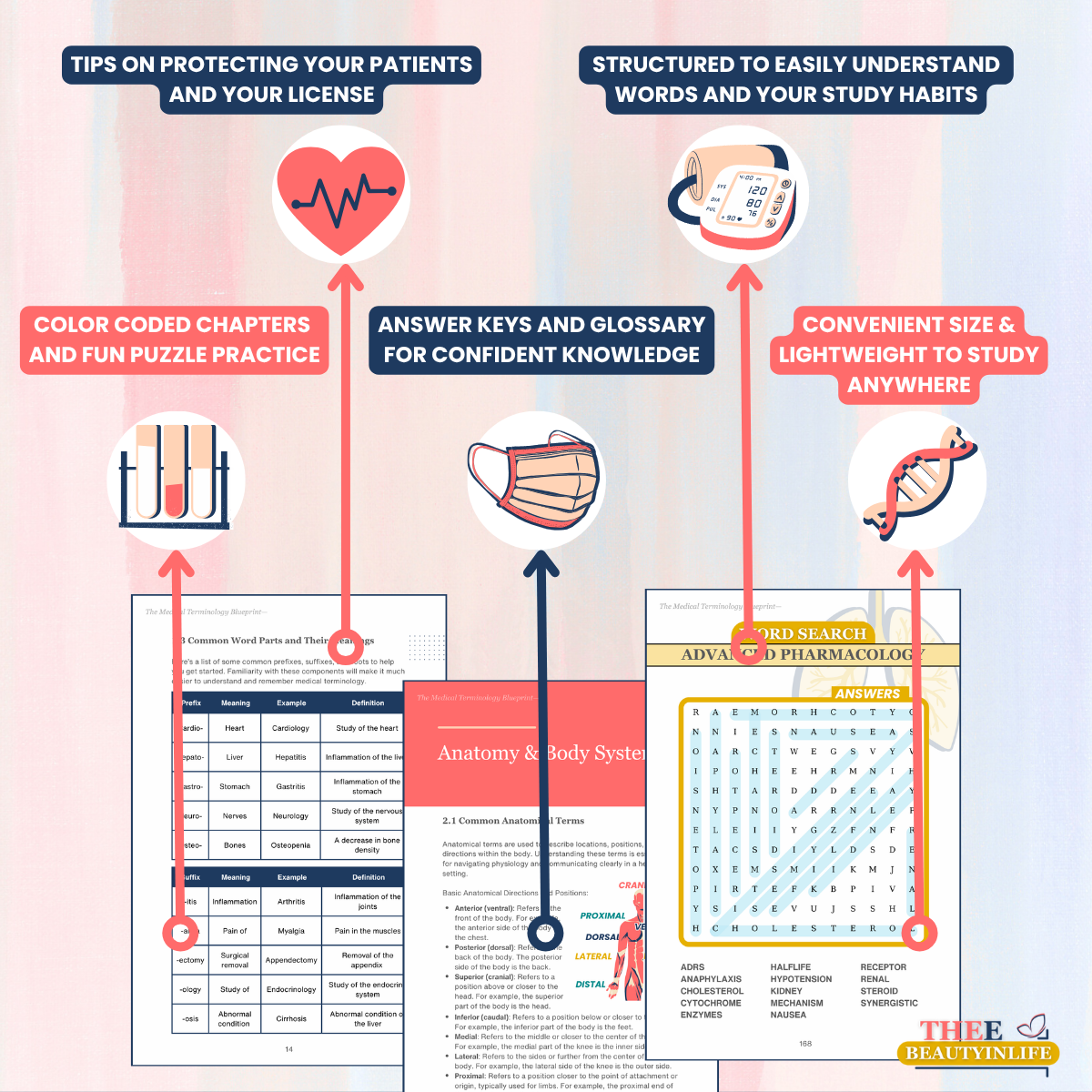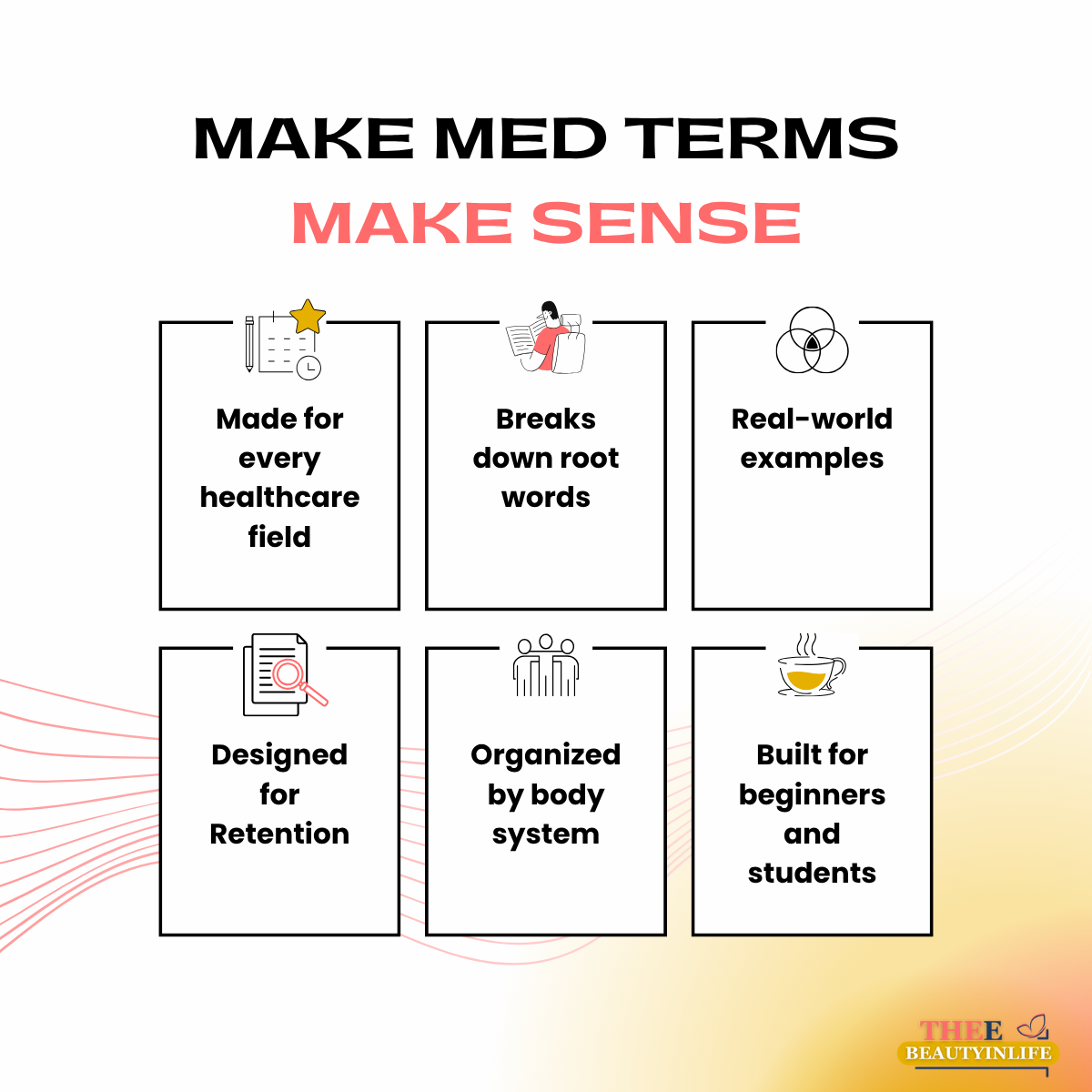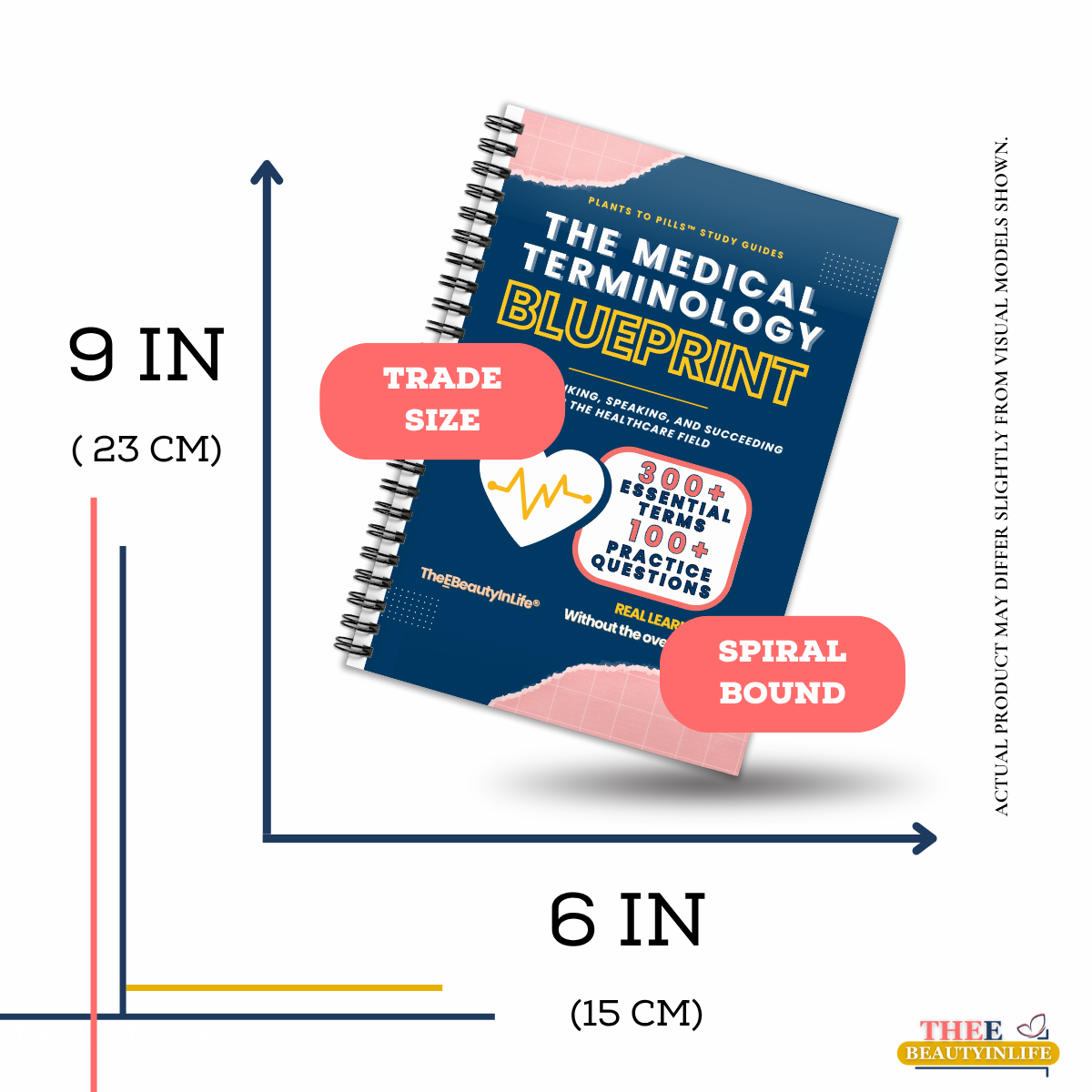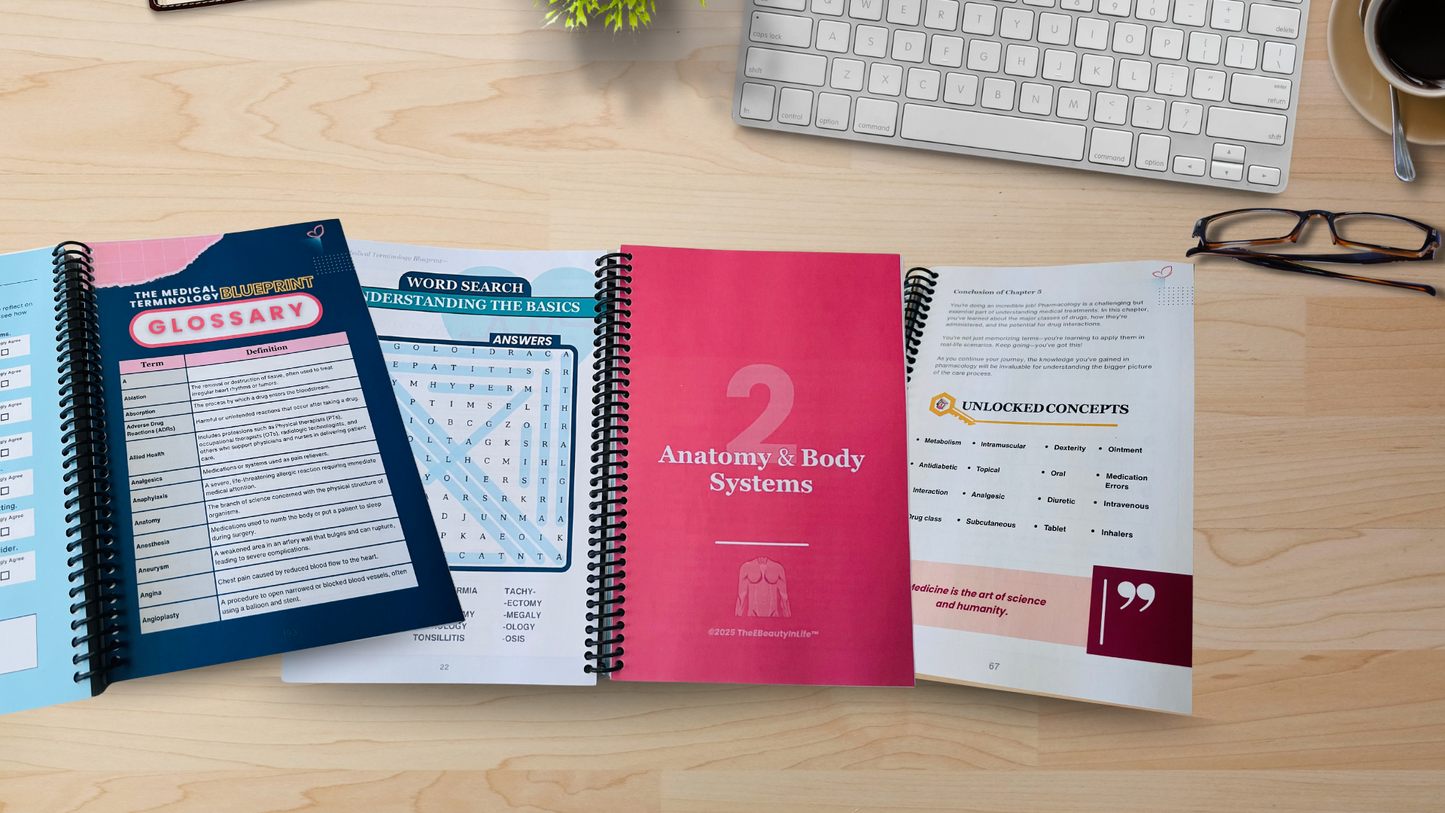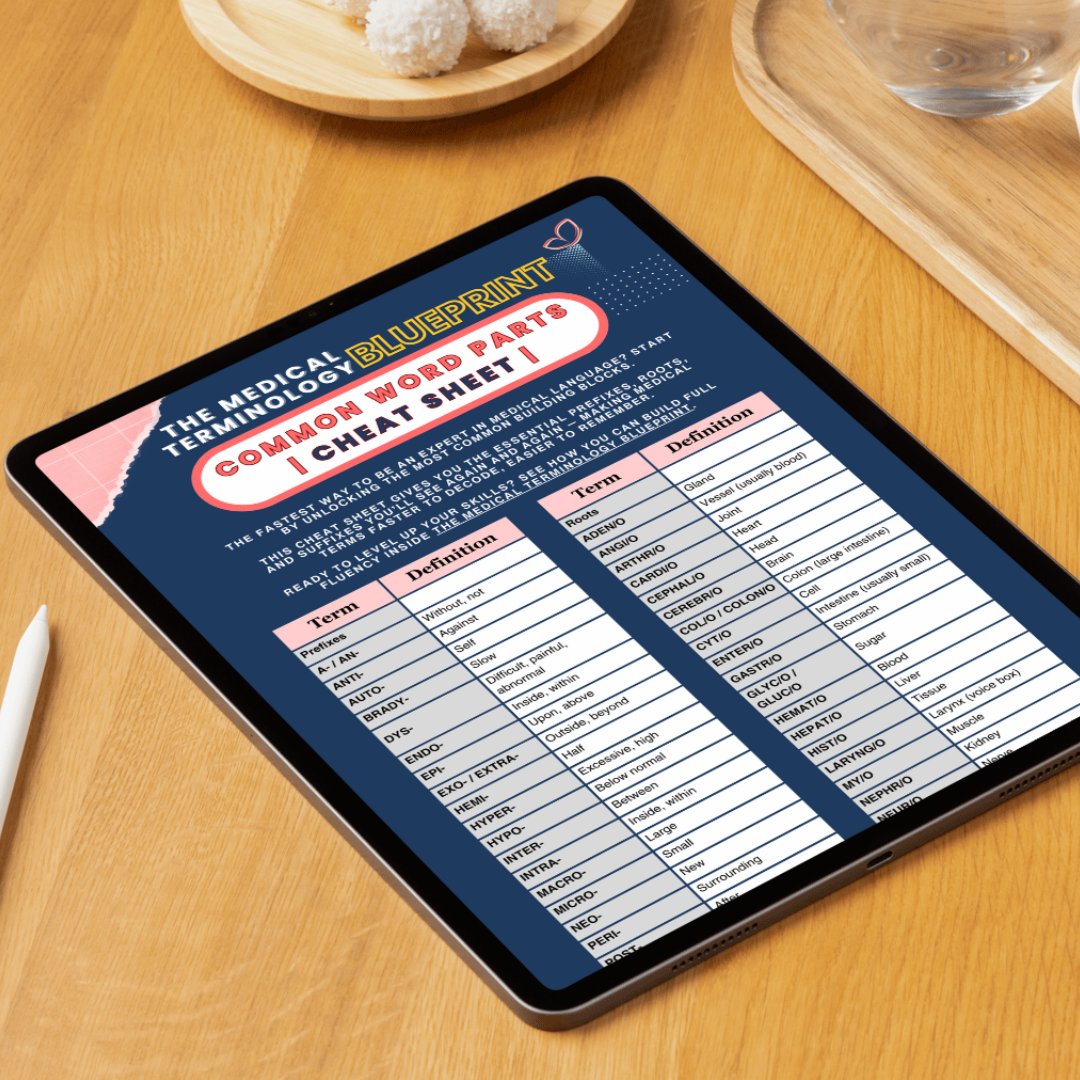
How I’d Study Medical Terminology If I Had to Start Over
Share
How I’d Study Medical Terminology If I Had to Start Over
“You just have to memorize it!” That’s what we were told on our first day of medical terminology class. And so we all surrendered our hours to another mountain of flashcards and hoped that it meant something. Now that I’ve conquered the schoolwork and spent some time in the medical field, here’s exactly what I’d do instead.

1. Start with the Systems and Settings—Not the Dictionary
Trying to memorize words without understanding how they fit into a situation is like learning random parts of a machine without knowing what the machine does. I’d focus on learning medical terms by body system or clinical setting: cardiovascular, respiratory, MRI, and so on.
It builds a stronger foundation, and it helps new terms click faster when you see how everything connects in context.
2. Break Down Words by Their Parts
Most medical terms follow a pattern: root, prefix, suffix. Once you understand the structure, you can decode unfamiliar terms on the spot.
Instead of memorizing a thousand terms individually, I’d spend my time learning the most common word parts (like this list we made). It’s a strategy that compounds—more understanding with less effort over time.
3. Stop Memorizing—Start Interpreting
If a term shows up in a clinical setting, it usually comes with clues: symptoms, context, related conditions. Learning to spot meaning in real-world usage is more valuable than being able to recite a definition out of a textbook.
That shift—from memorizing to translating—is what makes you feel confident in conversations, notes, and even exams. Like any language, individual words don’t mean much if you can’t put a sentence together.
4. Use Active Tools (Not Just Passive Notes)
I’d trade in passive review for active engagement: quizzes, puzzles, matching exercises, labeling diagrams. They’re not just for fun—they make your brain retrieve and apply what you’ve learned. (Our workbook is filled with them. Take a look!)
It’s the difference between watching someone lift weights and actually building your own strength. And it’s a small way to reward yourself while studying.
5. Reinforce It with Mindset and Consistency
Studying is easier when you’re not working against your energy or motivation. I’d keep a short routine, track small wins, and use reflection prompts to keep my goals clear. Mindset training isn’t “fluff”—it’s one of the most important factors for how you’ll progress through your career, and your life.
The Practice I Wish I Had Earlier
The Medical Terminology Blueprint was created with all of this in mind: a way to learn faster, retain more, and build confidence in real healthcare environments. It’s structured the way I wish my early materials had been—and it’s already helped other students build a more efficient path forward.
If you’re just getting started—or starting over—it’s a resource worth looking into.
Want more tips like this?
Stick around—new posts are upcoming. You can also join the list to get helpful strategies (and a free cheat sheet) delivered straight to your inbox.




